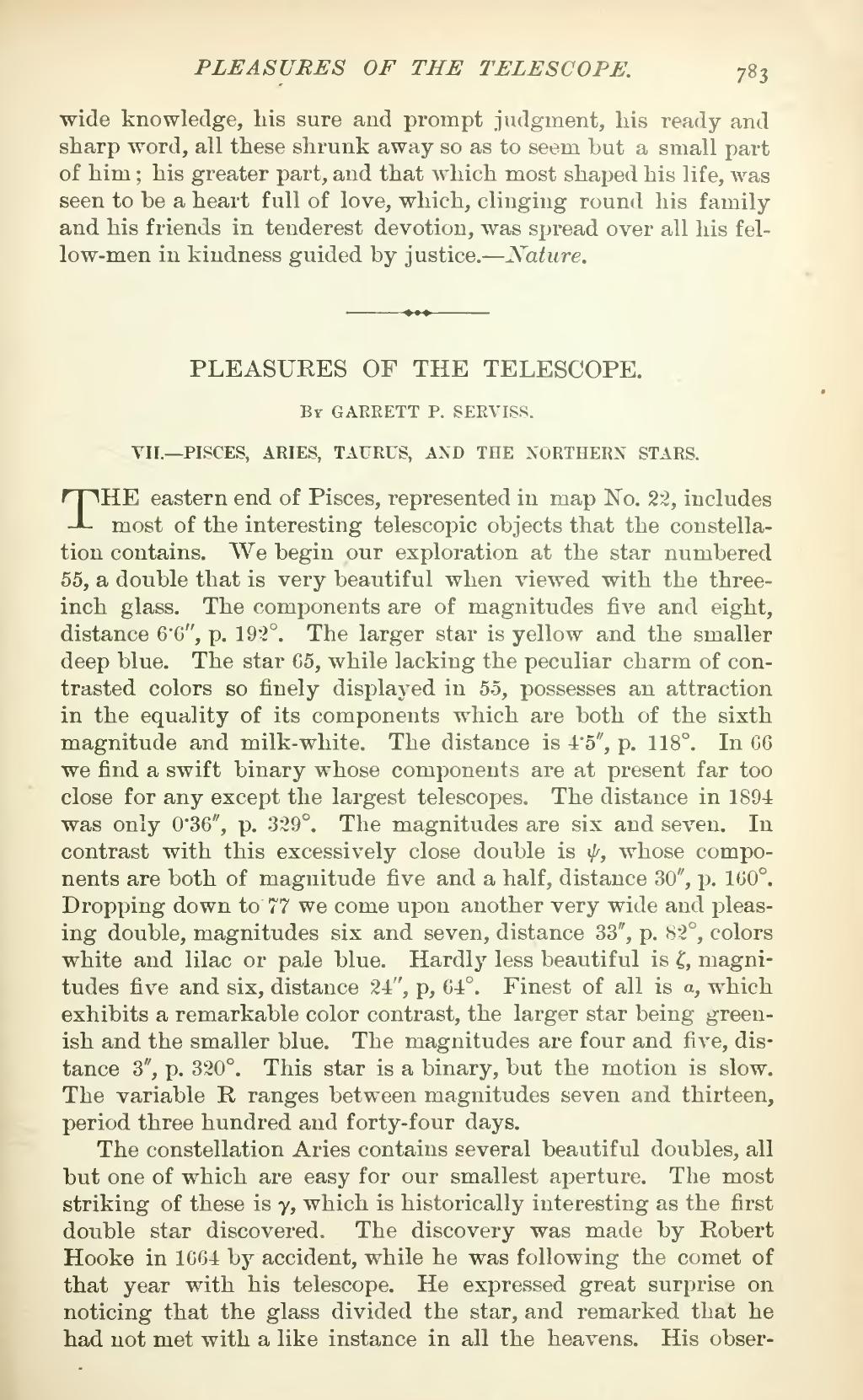wide knowledge, his sure and prompt judgment, his ready and sharp word, all these shrunk away so as to seem but a small part of him; his greater part, and that which most shaped his life, was seen to be a heart full of love, which, clinging round his family and his friends in tenderest devotion, was spread over all his fellow-men in kindness guided by justice.—Nature.
| PLEASURES OF THE TELESCOPE. |
By GARRETT P. SERVISS.
VII.—PISCES, ARIES, TAURUS, AND THE NORTHERN STARS.
THE eastern end of Pisces, represented in map No. 22, includes most of the interesting telescopic objects that the constellation contains. We begin our exploration at the star numbered 55, a double that is very beautiful when viewed with the three-inch glass. The components are of magnitudes five and eight, distance 6·6″, p. 192°. The larger star is yellow and the smaller deep blue. The star 65, while lacking the peculiar charm of contrasted colors so finely displayed in 55, possesses an attraction in the equality of its components which are both of the sixth magnitude and milk-white. The distance is 4·5″, p. 118°. In 66 we find a swift binary whose components are at present far too close for any except the largest telescopes. The distance in 1894 was only 0·36″, p. 329°. The magnitudes are six and seven. In contrast with this excessively close double is ψ, whose components are both of magnitude five and a half, distance 30″, p. 160°. Dropping down to 77 we come upon another very wide and pleasing double, magnitudes six and seven, distance 33″, p. 82°, colors white and lilac or pale blue. Hardly less beautiful is ζ, magnitudes five and six, distance 24″, p, 64°. Finest of all is α, which exhibits a remarkable color contrast, the larger star being greenish and the smaller blue. The magnitudes are four and five, distance 3″, p. 320°. This star is a binary, but the motion is slow. The variable R ranges between magnitudes seven and thirteen, period three hundred and forty-four days.
The constellation Aries contains several beautiful doubles, all but one of which are easy for our smallest aperture. The most striking of these is γ, which is historically interesting as the first double star discovered. The discovery was made by Robert Hooke in 1664 by accident, while he was following the comet of that year with his telescope. He expressed great surprise on noticing that the glass divided the star, and remarked that he had not met with a like instance in all the heavens. His obser-

